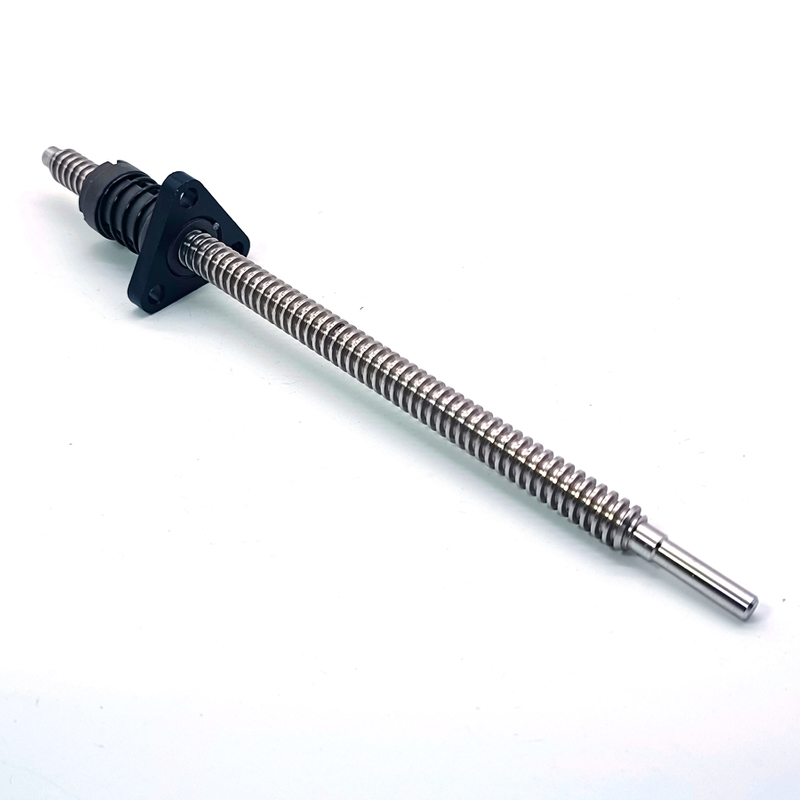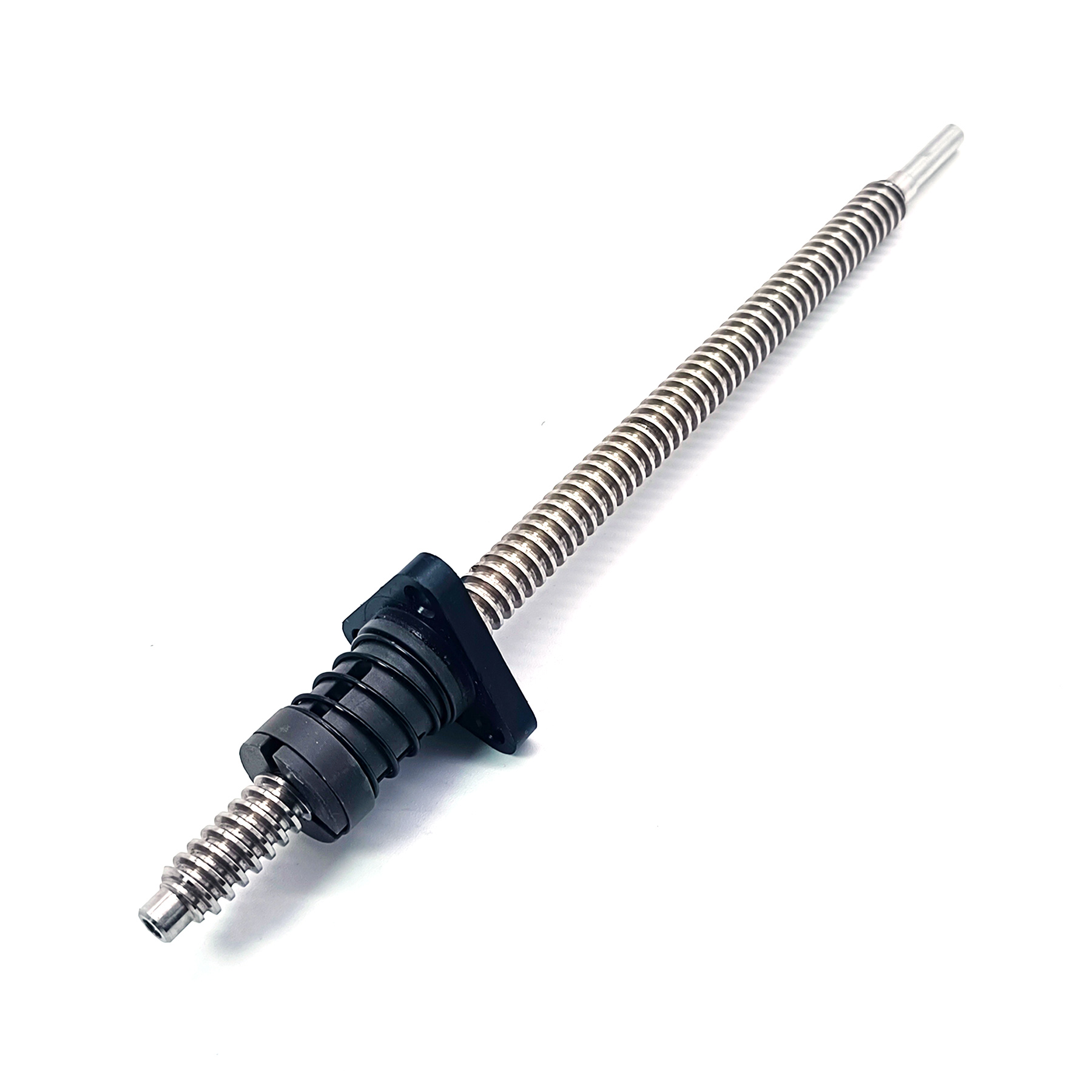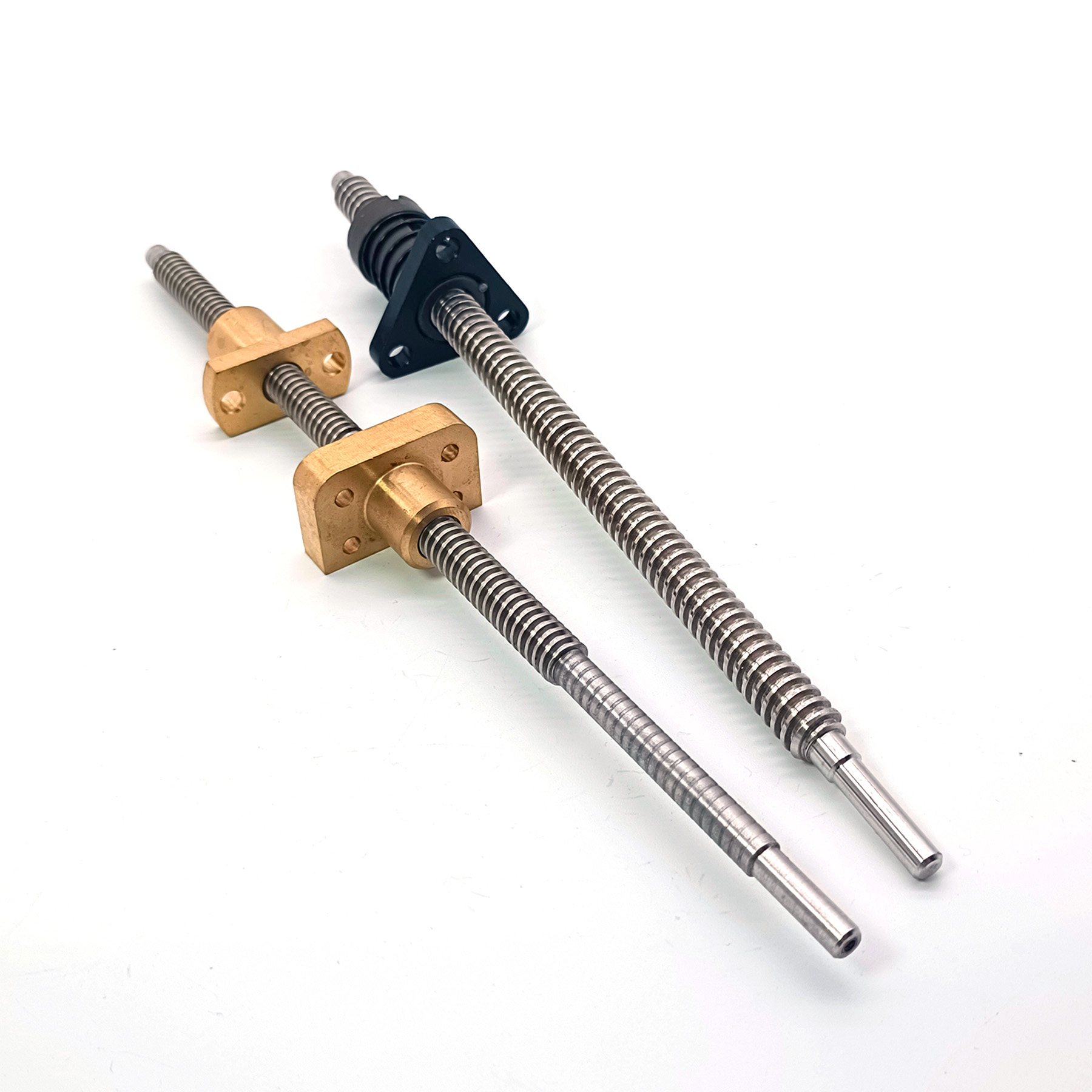- All
- Product Name
- Product Keyword
- Product Model
- Product Summary
- Product Description
- Multi Field Search
| Availability: | |
|---|---|
| Quantity: | |






HINA
HNF2024020604
ACME thread rod is a rod with a trapezoidal thread profile. ACME thread belongs to the British trapezoidal thread, and its tooth angle is 29°. Compared with ordinary triangular thread, it has better load-bearing capacity. The design of this tooth angle enables the thread to distribute stress more evenly when subjected to axial and radial forces, reducing stress concentration.
The surface accuracy of the rod is generally high, which is to ensure good transmission performance when matched with the nut. For example, in some precision mechanical transmission devices, the high precision of ACME thread rod can ensure the accuracy and stability of transmission and reduce vibration and noise during transmission.



In the machine tool industry, ACME thread rod is widely used. For example, in the screw drive of the lathe, ACME thread rod can convert the rotary motion of the motor into the linear motion of the tool holder. Due to its good load-bearing capacity and transmission accuracy, it can meet the requirements of accuracy and load capacity in the machine tool processing process and ensure the quality of the processed parts.
It is also used in lifting equipment. In the lifting mechanism of the crane, ACME thread rod can be used as a screw to cooperate with the nut to achieve smooth lifting and lowering of heavy objects. Because lifting equipment needs to bear a large weight, the high load-bearing capacity of ACME threaded rods can effectively prevent the screw from deforming or being damaged during operation.
In some linear motion devices, such as linear modules on industrial automation production lines, ACME threaded rods are also commonly used transmission components. It can drive the load to move linearly along the guide rail, and through precise thread matching, it can achieve precise positioning and speed control, meeting the strict requirements of automated production for position accuracy and movement speed.
In terms of materials, ACME threaded rods are usually made of high-strength alloy steel. These alloy steels undergo heat treatment processes such as quenching and tempering to improve their hardness and toughness. For example, 40Cr alloy steel is one of the commonly used materials. After quenching and tempering, its hardness can reach about HRC40-50, and it has good toughness, which can meet the performance requirements of ACME threaded rods under most working conditions.
In terms of manufacturing process, the basic shape of the threaded rod is first processed by rolling or turning. During the rolling process, the material is rolled into a thread shape through a die under high temperature and high pressure. This method has high production efficiency and can ensure the accuracy and strength of the thread. Turning is to cut the blank with a tool on a CNC lathe or other equipment. This method is more suitable for small batch production and processing of some special specifications of ACME threaded rods. After processing, surface treatment such as galvanizing and chrome plating is required to improve the corrosion resistance and wear resistance of the rod.
What is another name for a threaded rod?
Another name for a threaded rod is all-thread or stud.
What is the size of a thread rod?
Threaded rods come in various sizes, typically ranging from #4-40 (smallest) to 4 inches or more in diameter, and lengths from 1 foot to 12 feet or longer, depending on the application and standard.
Is threaded rod as strong as a bolt?
Threaded rods are generally not as strong as bolts because bolts often have heads and are made to specific grades for strength, while threaded rods may not meet the same strength standards unless specified as high-grade.
ACME thread rod is a rod with a trapezoidal thread profile. ACME thread belongs to the British trapezoidal thread, and its tooth angle is 29°. Compared with ordinary triangular thread, it has better load-bearing capacity. The design of this tooth angle enables the thread to distribute stress more evenly when subjected to axial and radial forces, reducing stress concentration.
The surface accuracy of the rod is generally high, which is to ensure good transmission performance when matched with the nut. For example, in some precision mechanical transmission devices, the high precision of ACME thread rod can ensure the accuracy and stability of transmission and reduce vibration and noise during transmission.



In the machine tool industry, ACME thread rod is widely used. For example, in the screw drive of the lathe, ACME thread rod can convert the rotary motion of the motor into the linear motion of the tool holder. Due to its good load-bearing capacity and transmission accuracy, it can meet the requirements of accuracy and load capacity in the machine tool processing process and ensure the quality of the processed parts.
It is also used in lifting equipment. In the lifting mechanism of the crane, ACME thread rod can be used as a screw to cooperate with the nut to achieve smooth lifting and lowering of heavy objects. Because lifting equipment needs to bear a large weight, the high load-bearing capacity of ACME threaded rods can effectively prevent the screw from deforming or being damaged during operation.
In some linear motion devices, such as linear modules on industrial automation production lines, ACME threaded rods are also commonly used transmission components. It can drive the load to move linearly along the guide rail, and through precise thread matching, it can achieve precise positioning and speed control, meeting the strict requirements of automated production for position accuracy and movement speed.
In terms of materials, ACME threaded rods are usually made of high-strength alloy steel. These alloy steels undergo heat treatment processes such as quenching and tempering to improve their hardness and toughness. For example, 40Cr alloy steel is one of the commonly used materials. After quenching and tempering, its hardness can reach about HRC40-50, and it has good toughness, which can meet the performance requirements of ACME threaded rods under most working conditions.
In terms of manufacturing process, the basic shape of the threaded rod is first processed by rolling or turning. During the rolling process, the material is rolled into a thread shape through a die under high temperature and high pressure. This method has high production efficiency and can ensure the accuracy and strength of the thread. Turning is to cut the blank with a tool on a CNC lathe or other equipment. This method is more suitable for small batch production and processing of some special specifications of ACME threaded rods. After processing, surface treatment such as galvanizing and chrome plating is required to improve the corrosion resistance and wear resistance of the rod.
What is another name for a threaded rod?
Another name for a threaded rod is all-thread or stud.
What is the size of a thread rod?
Threaded rods come in various sizes, typically ranging from #4-40 (smallest) to 4 inches or more in diameter, and lengths from 1 foot to 12 feet or longer, depending on the application and standard.
Is threaded rod as strong as a bolt?
Threaded rods are generally not as strong as bolts because bolts often have heads and are made to specific grades for strength, while threaded rods may not meet the same strength standards unless specified as high-grade.